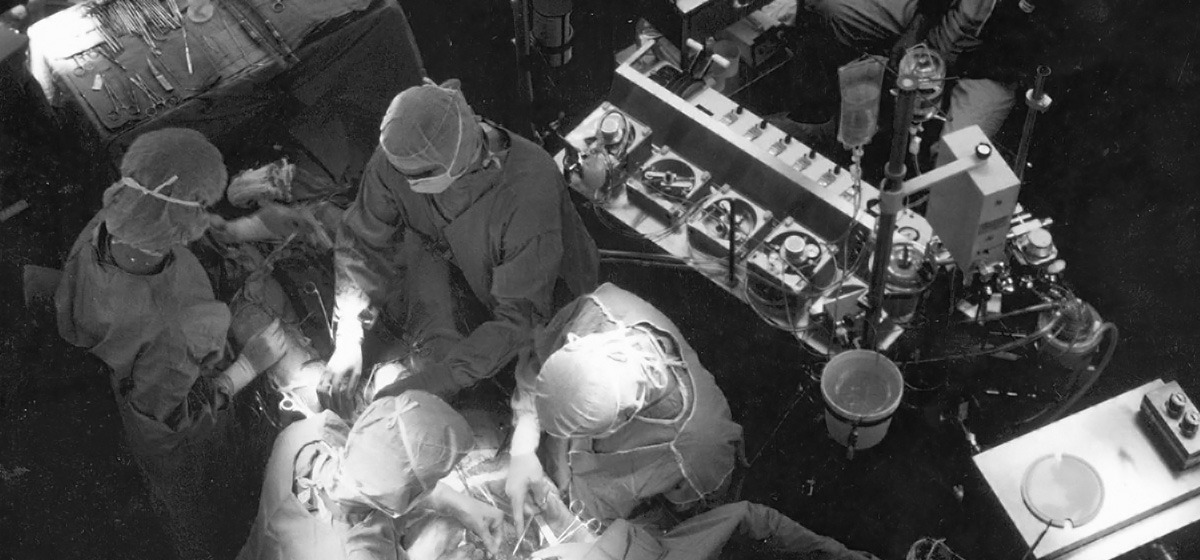Future Breakthroughs for Heart Disease

“The coronary bypass operation stands as a monument to an almost total lack of understanding of causes, prevention, and effective management of [heart] disease.” —Charles T. McGee, MD.
“It’s humbling to see medical dogma overturned.” —Bernadine Healy, MD, former Director, NIH, discussing the heart’s ability to heal itself
Once it became clear that human heart muscle cells could in fact regenerate, the race was on to develop heart therapies based on this fact.
The fundamental problem is that while heart muscle cells—cardiomyocytes—do regenerate, they do so too slowly to help many patients with complicated heart issues.
So here is where we stand regarding the tug-of-war between a) the importance of enlisting the heart itself in its own healing process and b) the need for CABG surgeons to keep minting money.
Cardiac progenitors
Scientists are working on a variety of techniques designed to improve the capacity of the heart to regenerate follow a heart attack. These experiments involve the use of cardiac progenitor cells, umbilical cord blood mononuclear cells, human embryonic stem cells, skeletal myoblasts and adult bone marrow stem cells, among others.
As an example, consider cardiac progenitor cells, which are stem cells in the heart. There aren’t many of them—about one percent of heart cells—but they are crucially important because they have the capacity for self-renewal and can transform themselves into various kinds of muscle cells, including our old friends the cardiomyocytes. This happens naturally in an uninjured heart, but it happens better and more quickly in a heart that has suffered muscle death following a heart attack.
Obviously, something is making progenitor cells work more effectively in a crisis, and if whatever that is can be harvested and, if possible, improved, scientists will have opened up additional opportunities for cardiac repair.
Making better scars
The core problem with heart attacks is the destruction of heart muscle and its replacement with scar tissue.
Since medical scientists first observed human heart scar tissue, it has been assumed that the tissue is dead (or at least inert) since, obviously, it doesn’t beat. More recently, though, research has shown that heart scars (created by heart attacks) are, in fact, quite active things, dynamically living structures that are metabolically active, vascularized, even modestly contractile.
As mentioned before in this series of posts, the formation of scar tissue prevents the mechanical failure of the heart when heart muscle dies during a heart attack. On the other hand, scar tissue has obnoxious side effects that impair the patient’s prognosis.
This has led some scientists to focus not on growing new heart muscle cells but on making better scars. Fibroblasts, a kind of heart cell, are responsible for forming scar tissue when the heart has been injured. Some scientists believe that, within a decade or less, scar tissue in the heart can be made to act more like the healthy heart muscle surrounding the scar, either actually participating in heartbeats or at least not working against them.
Alternatively, cardiac scars could be “electronically invisible” so that they no longer interfere with the electrical conductivity of heart muscle.
Avoiding fraud
After a century of assuring us all that the heart can’t regenerate itself, medical science suddenly got religion. If heart muscle cells could be regenerated quickly, and/or if cardiac scar issue could be improved, people who have heart attacks would have prognoses no different from people who damage, say, their bicep muscles.
And since more people die of heart disease than of anything else, including cancer, that would be one hell of a breakthrough. Quite suddenly, cell-based heart repair held out the hope that millions of patients need not follow the inevitable progression from heart disease to heart failure to death.
Just think about the Nobel Prize in Medicine…
Unfortunately, this gold rush has led even some of the leading scientists to cut corners. Probably the most prominent corner-cutter was Harvard’s Piero Anversa, who was unceremoniously fired after a four-decade career and more than 350 published papers. At least 30 of those papers have now been retracted, and Harvard paid a $10 million fine for failure to adequately supervise the Anversa lab.
Listening to medical scientists outside the U.S.
As noted last week, the U.S. is the only country in the world still focused on the barbaric CABG surgery. A quick look around at our peer countries might have a chastening effect, given that CABG surgeries are becoming an endangered species everywhere else.
Could this possibly be due to the staggering amount of money U.S. CABG surgeons haul down? Might not the health insurers—or Medicare—have a close look at this insane spending?
As these word were being written, the New York Times disclosed that astronaut Neil Armstrong died needlessly in part because of an unnecessary CABG procedure. “It feels to me like his death was wholly preventable,” said Dr. Ashish Jha, Professor of Medicine at Harvard University. “It’s not completely clear to me he needed the [CABG] surgery that he got. It …sounds like he was rushed into surgery….”
Remembering that there is a patient involved
As noted in the first quote that launched this post, it’s high time for medicine to stop patting itself on the back for its (now 40 years out of date) CABG heroics and to remember that there is a patient—an actual human being—involved in this adventure.
You can read the medical literature on CABG surgery until you are blue in the face and you will receive no hint of the trauma involved at the patient level. Maybe that trauma was, if not justified, at least inevitable, when everyone believed the human heart couldn’t repair itself. But those days are long gone—and most CABG surgeries should also be long gone.
Next up: Modern Monetary Madness





